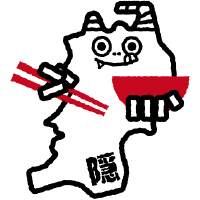
Search by #HASHTAG
#Miyagi
What’s #HASHTAG ?
Search
Access
Contact
For Business
#Miyagi
Language
Please select a language.
ご希望の言語を選択してください。
Search
Please select a search condition.
ご希望の条件を選択してください。
Category
カテゴリー
Season
季節
Area
地域
Privacy Policy
Inoutbound Sendai / Matsushima Corporation operates the “#MIYAGI” (hereinafter the “Website”) and has established a website privacy policy, in accordance with the “Act on the Protection of Personal Information”.
Based on this privacy policy, we will make all efforts to protect your personal information.
1. Collecting personal information on our website
We collect personal information only on a legally fair condition.
2. Use of personal information
We use personal information only for the purposes of use users agree on when we collect it and for actions necessary for business execution.
3. Providing personal information to a third party
We do not provide nor disclose the personal information we collect to a third party without the user’s consent. However, we may disclose necessary information when a demand for disclosure on a legal condition.
4. Management of personal information
We manage personal information accurately and keep them safely.
We take appropriate information security measures for illegal accessing and computer viruses in order to prevent loss, damage, falsification and leakage of personal information.
5. Disclosure, correction, suspension and deletion of personal information
We acknowledge our users’s rights to demand disclosure, correction, suspension and deletion of their personal information, and take an appropriate action upon request.
6. Scope of application
This privacy policy is valid only on our website. Our website includes links to external web pages, however, this is not to share nor disclose personal information to a third party. For collection of personal information on an external web page, please refer to their privacy policy.
7. Disclaimer
We may revise our privacy policy due to law changes and other applicable situations. In any of these cases, we must update our website with the latest privacy policy.
8. Inquiries regarding our personal information policy
For inquiries regarding our personal information policy, please contact us at the following address.
In-outbound sendai-matsushima inc.
2 Flr No. 2 Katsuyama Bld., 2-10-1 Chuo, Aoba-ku, Sendai-shi, Miyagi
info@inoutbound.co.jp
022-397-9741
株式会社インアウントバウンド仙台・松島は、「個人情報保護法」に基づき、ウェブサイトにおけるプライバシーポリシーを定め、「#MIYAGI」(以下「当ウェブサイト」という)の運営を行います。本プライバシーポリシーに基づき、個人情報の保護に努めます。
1.当ウェブサイトにおける個人情報の取得について
当社は、適法かつ公正な手段によって、個人情報を取得いたします。
2.個人情報の利用について
当社は、個人情報を取得の際に示した利用目的の範囲内で、業務の遂行上必要な限りにおいて利用いたします。
3.個人情報の第三者提供について
取得した個人情報は、お客様本人の同意をなくして第三者に開示、提供することはありません。ただし、法令に基づく開示要請があった場合、必要最低限の情報を開示させていただくことがございます。
4.個人情報の管理について
当社は、個人情報の正確性を保ち、これを安全に管理いたします。
当社は、個人情報の紛失、破壊、改ざんおよび漏えいなどを防止するため、不正アクセス、コンピュータウィルス等に対する適正な情報セキュリティ対策を講じます。
5.個人情報の開示・訂正・利用停止・消去について
当社は、本人が自己の個人情報について、開示・訂正・利用停止・消去等を求める権利を有していることを確認し、これらの要求がある場合には、合理的な範囲内で遅滞なく必要な対応をいたします。
6.適用範囲
本プライバシーポリシーは、当ウェブサイトにおいてのみ適用されます。当ウェブサイトは、いくつかの外部サイトへのリンクを含みますが、個人情報を共有するものではありません。リンク先ウェブサイトにて行われる個人情報の収集に関しては、リンク先ウェブサイトのプライバシーポリシー等をご参照ください。
7.免責事項
当社は法令の変更等、必要に応じて、本プライバシーポリシーを改定することがあります。その際は、最新のプライバシーポリシーを本ウェブサイトに掲載いたします。
8.個人情報の取り扱いについてのお問い合わせ
上記の内容について、そのほか当ウェブサイトにおける個人情報の取り扱いについてのご意見やご質問は、下記までご連絡ください。
株式会社インアウトバウンド仙台・松島
〒980-0021 宮城県仙台市青葉区中央2丁目10-1 第二勝山ビル2階
info@inoutbound.co.jp
022-397-9741
What’s #HASHTAG ?
ABOUT THIS SITE

Share with travelers around the world,
Find your "#".
By using #MIYAGI, you can find all sorts of content that will spark your journey to the following nine towns and cities: Sendai, Shiogama, Natori, Tagajo, Iwanuma, Higashi-matsushima, Matsushima, Shichigahama, and Rifu. In addition, we have posted information about these nine areas to let you find out a little bit more about your destination.
The nine localities constitute an area of about 45 km from north to south and 70 km from east to west. About the size of a grain of rice if looked at on a globe, this area contains seas, mountains, and rivers that have all the blessings of a rich natural environment, and each locality has a unique way of life and food culture. With cherry blossoms in the spring, the heat of summer, the romance of autumn, and snow to enjoy in the winter, they are full of ways to experience the shifting of the seasons. This area is the kind of place where visiting in just one part or for just one season would be a waste.
We hope that, through this website, you will be able to learn about the wonders that this area of nine towns and cities has to offer and travel far and wide within it. Even better, we hope you will be able to enjoy a journey that takes you all across the Tohoku region and the rest of Japan.
【Meaning of #MIYAGI】
#:hashtag
A symbol that is placed in front of characters that represent a place or number.
A symbol that shares all kinds of information, connecting people with each other and places.
【Data on the nine towns and cities】
Total area:1,194.98 km2 *
Total population:1,433,706 people *
Easternmost point:38°26’01.3”N 141°15’31.5”E
Westernmost point:38°15’24.0”N 140°28’10.4”E
Northernmost point:38°28’21.7”N 141°13’33.8”E
Southernmost point:38°03’03.7”N 140°55’16.0”E
The area is located at the same latitude as Athens and Lisbon, with Washington, DC, a little to the north and San Francisco a little to the south.
*The population estimate was based on the 2018 census.
9 Areas

SENDAI city
Since the Edo period, when Date Masamune built Sendai Castle, the area has been known as “Sendai” and has been a center of cultural and economic development. Although it is an ordinance-designated city, it contains many traditional buildings, a rich natural environment, and historic hot springs. Various events, including the Sendai Tanabata Festival, are held here throughout the four seasons.
View Contents

SHIOGAMA city
In the spring, Shiogama Sakura cherry blossoms bloom at Shiwahiko-jinja Shrine and Shiogama-jinja Shrine, a nationally designated natural monument. In the summer, the extravagantly colored gozasen boat crosses the bay with over 100 other ships. In the autumn, the leaves change color, and, in the winter, you can enjoy Sanriku Shiogama Higashimono and the abundant seafood that is offered in Shiogama, which boasts some of the biggest catches of fresh Pacific bluefin tuna in Japan. Shiogama is a seaside town that can be enjoyed all year round.
View Contents

NATORI city
Natori River runs to the north of Natori; the Pacific Ocean lies to the east; Sendai Airport sits to the south; and Yuriage Harbor, which has prospered since the Edo period, is situated at the estuary of the Natori River. Natori has many historic resources—such as Tohoku’s largest keyhole-shaped burial mound, Raijinyama Kofun, and Natorikumano-sanja: three shrines that have stood since the Heian period. As a fishing harbor and the entrance to Tohoku, Natori is an area where food, history, and many enjoyable experiences await.
View Contents

TAGAJYO city
Along with the Heijo Palace Remains in Nara Prefecture and the Dazaifu Remains in Fukuoka Prefecture, the Tagajo Remains comprise one of the Three Great Historic Remains of Japan. Many ruins, shrines, and temples in addition to the Tagajo Monument, which is one of Japan’s three ancient monuments, and a monument that Matsuo Basho is said to have visited in The Narrow Road to the Deep North remain here. Why not take a tour around the Tohoku region’s ancient political capital and experience the romance of history?
View Contents

IWANUMA city
As a hub for traffic to the Tohoku region since ancient times, Iwanuma was a post town on the old highway, and it flourished as the town around the Takekoma Inari Shrine and the castle town of the Iwanuma clan. In the Edo period, the Abukuma River, which flows to the south of the city, developed the city as a center for water transport. Today, transport has shifted from the rivers to the skies, and Sendai International Airport fills the river’s role. As it was in the past, the city of Iwanuma continues to be a place where people gather, come, and go.
View Contents

HIGASHI MATSUSHIMA city
Higashi-matsushima includes the largest island in Matsushima Bay, Miyato Island. If this is your first visit, try climbing Mt. Otakamori, which is in the middle of the island, to enjoy one of the Four Great Views of Matsushima Bay. From the summit, you can see the blue of the sea and sky, and, if you are lucky, you can see the Blue Impulse aerobatic team racing through the sky. Encounter beautiful blue scenery that will leave you mesmerized.
View Contents

MATSUSHIMA town
Together with Amanohashidate in Kyoto and Miyajima in Hiroshima, Matsushima is one of Japan’s Three Most Scenic Spots. With many cultural heritage sites such as Zuiganji Temple and Godaido Temple, Matsushima was once visited as a sacred ground, and, since the Edo period, it has enchanted its visitors with its picturesque scenery: the more than 260 islands, large and small, that float in Matsushima Bay and the changing nature of the four seasons. The area is also blessed with plentiful seafood, and it has been well known since long ago for its prosperous oyster cultivation.
View Contents

SHICHIGAHAMA town
With the Pacific Ocean to the south and Matsushima Bay to the north and east, Shichigahama is surrounded by the sea on three sides. Jutting out as if to cradle the bay, the peninsula that the town lies on features seven beaches, from which the name of the town is derived (Shichigahama means seven beaches in Japanese). Since the Jomon era, the town has thrived alongside the sea, and more than 50 shell mounds and ruins—including the Daigigakoi Shell Mound, the largest shell mound in the Tohoku region—have been found here. Shichigahama, the smallest town in Tohoku, features beautiful scenery and a rich bounty from the sea.
View Contents

RIFU town
Rifu is a town with a long history of nashi pear cultivation, and it boasts a flourishing industry of oyster, nori, and wakame seaweed farming in its two fishing ports. Blessed by its natural environment, the town is home to a variety of parks that can be enjoyed in all seasons and many famous cherry blossom spots, which crowds of tourists come to visit in the spring. Rifu also has a sports park that hosts international soccer matches and many famous artists from Japan and overseas. All kinds of events are held there throughout the year.
View Contents
Teams
OUR COMPANY

In Outbound Sendai Matsushima Inc.
Based in Miyagi Prefecture, we are a regional land operator that plans and manages tours for inbound visitors. We work on all kinds of business that relates to travel and tourism, including planning custom tours and providing multilingual guides and marketing.
More Detail
LOCAL TOURS

Tohoku Local Secret Tours
Using local guides, we provide many tours that let you discover and experience the wonders of Japan that lie hidden in the everyday activity of the nearby area.
More Detail





